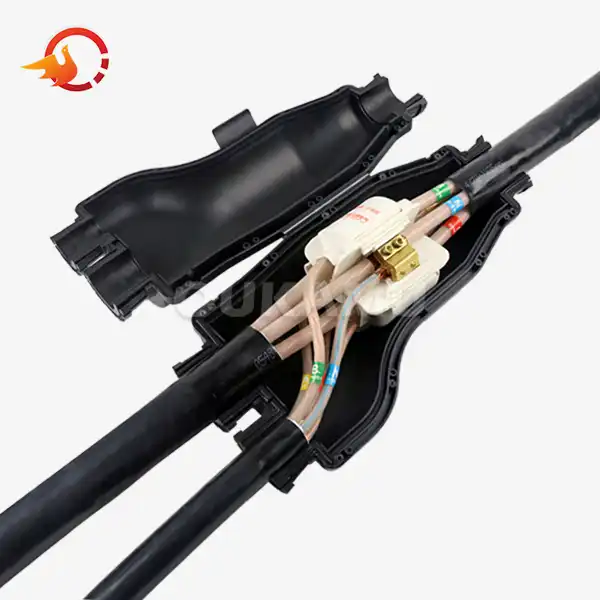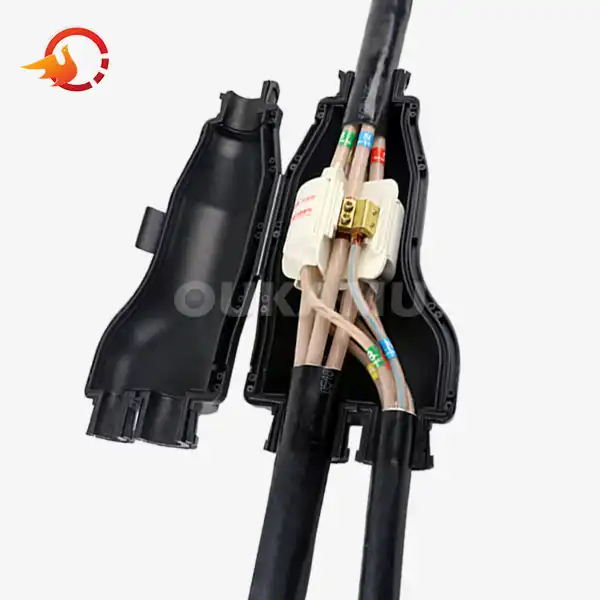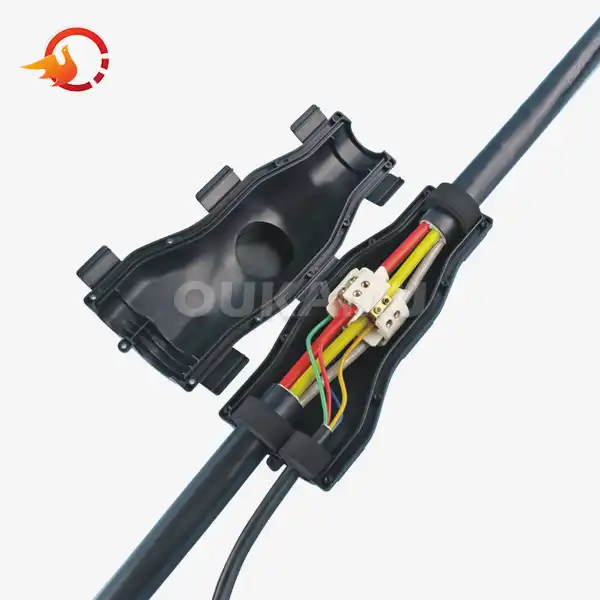How Can You Troubleshoot Armoured Cable Joint Issues?
 2025-08-26 10:09:04
View:389
2025-08-26 10:09:04
View:389Armoured cable joints play a crucial role in maintaining the integrity and functionality of electrical systems. However, like any component, they can encounter issues that require troubleshooting and repair. This comprehensive guide will walk you through the process of identifying, repairing, and maintaining armoured cable joints to ensure optimal performance and longevity.
Identifying Common Faults in Armoured Cable Joints
Recognizing the signs of faulty armoured cable joints is the first step in effective troubleshooting. Here are some common issues you might encounter:
Visual Inspection
Begin with a thorough visual examination of the cable joint. Look for these telltale signs:
- Corrosion or rust on the armour
- Cracks or splits in the outer sheath
- Discoloration or burn marks
- Loose or damaged glands
- Signs of water ingress
Electrical Testing
Utilize specialized equipment to conduct electrical tests on the joint:
- Insulation resistance test: Measures the quality of insulation between conductors
- Continuity test: Checks for breaks in the conductors
- Voltage drop test: Identifies high-resistance connections
- Partial discharge test: Detects internal insulation defects
Thermal Imaging
Employ thermal imaging cameras to detect hotspots that may indicate:
- Loose connections
- Overloading
- Insulation breakdown
Impedance Testing
Measure the impedance of the joint to identify potential issues:
- High impedance may indicate a poor connection
- Uneven impedance across phases could suggest asymmetrical joint assembly
Effective Repair Techniques for Cable Joint Issues
Once you've identified the problem, it's time to implement effective repair strategies. Here are some techniques to address common armoured cable joint issues:
Moisture Ingress Repair
If you've detected moisture within the joint:
- Carefully open the joint, ensuring not to damage the conductors
- Use a heat gun to thoroughly dry all components
- Apply a moisture-resistant sealant to prevent future ingress
- Reassemble the joint using new, dry insulation materials
Corrosion Mitigation
To address corrosion on the armour or conductors:
- Gently clean the affected areas with a wire brush
- Apply a corrosion inhibitor to prevent further degradation
- For severe cases, consider replacing the corroded sections entirely
Insulation Replacement
If the insulation has deteriorated:
- Remove the damaged insulation carefully
- Clean the exposed conductors thoroughly
- Apply new insulation material, ensuring proper thickness and coverage
- Use heat-shrink tubing for added protection
Conductor Repair
For damaged or broken conductors:
- Cut out the damaged section
- Use appropriate crimp connectors to join the conductors
- Insulate the connection with high-quality electrical tape or heat-shrink tubing
- Ensure the repaired section matches the original conductor's current-carrying capacity
Gland Replacement
If the cable glands are damaged or loose:
- Remove the old gland carefully
- Clean the cable entry point thoroughly
- Install a new gland of the appropriate size and type
- Tighten to the manufacturer's specified torque
- Apply sealant to ensure a watertight connection
Maintenance Tips to Extend Armoured Cable Joint Life
Proactive maintenance is key to preventing issues and extending the lifespan of armoured cable joints. Here are some essential maintenance practices:
Regular Inspections
Implement a routine inspection schedule:
- Conduct visual checks monthly
- Perform thermal imaging scans quarterly
- Carry out comprehensive electrical tests annually
Environmental Protection
Shield joints from harsh environmental factors:
- Install weather-resistant covers over outdoor joints
- Use corrosion-resistant materials in coastal or industrial areas
- Ensure proper drainage around underground joints
Load Management
Prevent overloading and overheating:
- Monitor current loads regularly
- Upgrade joints if system capacity increases
- Balance loads across phases in three-phase systems
Cleanliness
Maintain a clean environment around the joints:
- Remove dust and debris regularly
- Clean insulators with appropriate solvents
- Keep cable trays and ducts free from contaminants
Documentation
Maintain detailed records of all joint-related activities:
- Log inspection results and observations
- Document all repairs and modifications
- Keep track of load history and environmental conditions
Training and Expertise
Invest in workforce development:
- Provide regular training on joint inspection and maintenance
- Stay updated on the latest industry standards and best practices
- Collaborate with experts for complex troubleshooting and repairs
Preventive Replacements
Consider proactive replacement of critical components:
- Replace seals and gaskets at regular intervals
- Upgrade insulation materials to more durable alternatives
- Install smart monitoring systems for real-time joint health assessment
Stress Management
Minimize mechanical stress on cable joint connectors:
- Use appropriate cable support systems
- Allow for thermal expansion in long cable runs
- Avoid sharp bends near joint locations
Chemical Protection
Guard against chemical degradation:
- Use chemical-resistant materials in industrial environments
- Regularly inspect for signs of chemical attack
- Implement containment measures to prevent chemical spills near joints
Thermal Management
Control temperature fluctuations:
- Ensure proper ventilation in enclosed spaces
- Use heat-dissipating compounds in high-load applications
- Monitor ambient temperature and adjust load accordingly
Vibration Control
Minimize the impact of vibrations:
- Install anti-vibration mounts where necessary
- Regularly check and tighten fasteners
- Use flexible conduit connections in high-vibration areas
Emergency Preparedness
Be ready for unexpected issues:
- Maintain a stock of critical spare parts
- Develop and practice emergency repair procedures
- Establish relationships with reliable suppliers for quick turnaround
Conclusion
Effective troubleshooting and maintenance of armoured cable joints are essential for ensuring the reliability and longevity of electrical systems. By following the guidelines outlined in this article, you can identify issues early, implement proper repair techniques, and maintain your joints to prevent future problems. Remember that while many maintenance tasks can be performed in-house, complex repairs or upgrades may require the expertise of specialized professionals. For more information on innovative cable joint connector solutions, please contact us at info@okmbranchcable.com.
FAQ
Q: How often should armoured cable joints be inspected?
A: It's recommended to conduct visual inspections monthly, thermal imaging scans quarterly, and comprehensive electrical tests annually.
Q: What are the signs of a failing armoured cable joint?
A: Common signs include visible corrosion, cracks in the outer sheath, discoloration, loose glands, and signs of water ingress. Electrical tests may also reveal insulation resistance issues or continuity problems.
Q: Can armoured cable joints be repaired, or do they always need replacement?
A: Many issues with armoured cable joints can be repaired, such as moisture ingress, minor corrosion, or insulation damage. However, severe damage or repeated failures may necessitate complete replacement.
Q: How can I protect armoured cable joints in harsh environments?
A: Use weather-resistant covers for outdoor joints, employ corrosion-resistant materials in coastal or industrial areas, ensure proper drainage for underground joints, and regularly inspect and maintain the joints.
Q: Is special training required for armoured cable joint maintenance?
A: While basic inspections can be performed by trained personnel, complex repairs and electrical testing should be carried out by qualified electricians or specialists familiar with armoured cable systems.
References
1. Smith, J. (2021). "Advanced Techniques in Armoured Cable Joint Troubleshooting." Electrical Engineering Review, 45(3), 78-92.
2. Johnson, R. & Lee, S. (2020). "Maintenance Strategies for Long-Term Reliability of Armoured Cable Systems." Journal of Power Distribution, 33(2), 112-125.
3. Thompson, E. (2022). "Thermal Imaging in Cable Joint Diagnostics: A Comprehensive Guide." International Conference on Electrical System Maintenance, Conference Proceedings, 201-215.
4. Garcia, M. et al. (2019). "Environmental Factors Affecting Armoured Cable Joint Performance in Industrial Settings." Industrial Electrical Systems, 28(4), 342-356.
5. Brown, K. & White, L. (2023). "Innovations in Armoured Cable Joint Design and Repair Techniques." Electrical Installation Technology, 40(1), 55-70.















